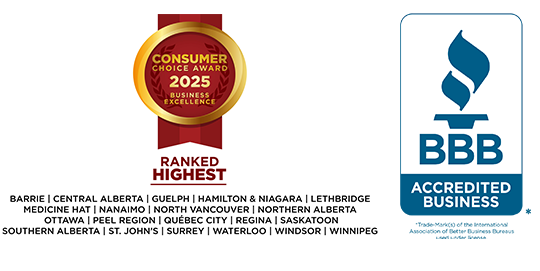Happy New Year and we hope you are having a healthy and prosperous start to the Year of the Ox! The Canadian economy has enjoyed more than 10 years of robust growth, yet only around half of Canadians are in good financial shape — and the COVID-19 pandemic certainly hasn’t improved matters.
According to the most recent MNP Consumer Debt Index:
- About a quarter of households spend more than they earn
- Almost half of Canadians live life paycheque to paycheque
- Around one-third have nothing saved for retirement
What’s holding people back?
There are numerous reasons Canadians struggle with their finances. One is unstable or insecure employment. The unemployment rate nearly doubled last year (9.75%, + 4.08) as many Canadians suffered pandemic-related income interruptions. But even before 2020, unemployment averaged nearly 6.4 percent over the previous five years — or roughly 1.5 million people at any given time.
Another persistent issue is inadequate financial literacy training at home and in school. Too many people grow up without learning how to interact with the financial system. This creates all sorts of issues, from low savings rates, to poor long-term planning, failing to budget, and mismanagement and misuse of credit just to name a few.
What are the keys to financial fitness?
Financial vulnerability is a serious issue which is only getting more serious as debts rise and savings decline. Thankfully there are quite a few resources for those who are struggling.
The federal Office of Consumer Affairs offers an easy-to-navigate resource center that walks people through common challenges and offers strategies to build overall financial health. Users can learn about the hidden costs of payday loans, find budgeting tips, and access advice for getting out of debt. MNP also has a wide range of blogs, DIY tools, and other resources — including Free Confidential Consultations — to help Canadians get out of debt and develop better financial habits.
However, just like physical fitness, financial fitness isn’t something anyone can achieve by sitting still. It requires consistent daily practice and a commitment to constantly improving. It also requires a watchful eye on personal consumption and knowing when to reach out for professional advice.
Following are some ideas for building financial strength and endurance.
Pay down credit card debt
Canadians now have more than $80 billion in credit card debt according to the latest figures from the banking industry. More than a third keep an outstanding balance on their card every month (the average balance is $8,600) which equates to $7 billion in annual interest payments per year. Given that interest rates on most cards average around 19.99 percent, it’s clear that paying down these expensive loans can deliver a significant fitness boost to many households.
Create a budget
According to a recent report by Financial Consumer Agency of Canada, only about half (49%) of Canadians use a budget. That’s unfortunate, because budgeting has been linked to many other positive behaviors, including paying bills on time, making regular deposits into a savings account, and paying off credit cards. Research shows the simple act of identifying, planning, and tracking sources income and expenses causes people to spend less and live more within their means.
Pay your bills on time
Another startling statistic from the Financial Consumer Agency of Canada reveals one in three Canadian adults does not pay their bills on time. While on the surface this tardiness may seem like a minor annoyance for creditors, it’s a deceptively damaging habit that can have a wide range of detrimental consequence:
- Punitive service fees can increase the cost of already expensive bills
- A backlog of past due bills can be difficult to repay on a limited income
- Credit damage will persist for a minimum of six years and potentially restrict access to new debts and favourable interest rates
- Increased interest rates on existing accounts add pressure to already tenuous budgets
Invest in your future
The MNP Consumer Debt Index consistently shows fewer than a third of Canadians are confident they could afford an unexpected expense like a job loss, or home or auto repair. A 2020 survey from one of Canada’s big five banks also revealed three in 10 Canadians aren’t saving anything for retirement — while another three in 10 worry they won’t have enough saved when they reach retirement age.
It can be difficult to keep an eye to the future when current financial difficulties are all consuming. But financial issues tend to compound. A small unpaid debt can rapidly grow into a monstrous balance — but so can small investments. Even saving just $50 per month over the next 30 years ($21,000) can grow to more than $45,000 in an RRSP with a nominal four percent rate of return.
Take the first step
Whether you find yourself buried in credit card debt, struggling to budget, missing bill payments, or failing to save for the future, remember change is possible. And you don’t have to do it all at once. As Confucius famously said, “the journey of a thousand miles begins with a single step.”
Decide on the changes you want to make and commit to making small, meaningful changes over a lifetime. You’ll be amazed to see the long term impacts these can make on your financial fitness. If your challenges feel too overwhelming to manage on your own, reach out to an MNP Licensed Insolvency Trustee in your area for a Free Confidential Consultation — we’re here to help and provide the support you need to achieve your financial goals.


